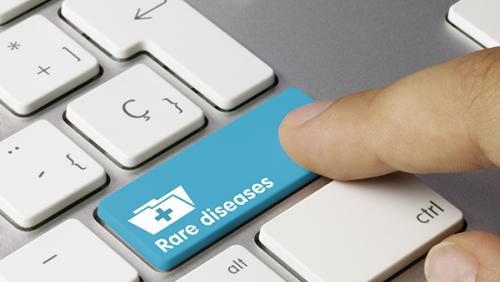LATEST NEWS
- All news
-
43Awards
-
9Burden of Osteoporosis
-
80Capture the Fracture
-
1Exercise
-
1FRAX
-
87IOF
-
35IOF Positions and Statements
-
1IOF Tour Latin America
-
20Meetings
-
77Member News
-
9Nutrition
-
38Policy
-
6Prevention
-
52Research
-
31Scientific Journals
-
14Skeletal Rare Diseases
-
9Training Courses
-
17Treatment
-
32World Osteoporosis Day
- News room - Latin America Region

Thanks to major progress in the understanding and management of rare congenital diseases and syndromes, many patients with these rare disorders are now living longer lives. With this progress it has become apparent that many non-skeletal rare diseases have an impact on bone mass, bone quality and/or bone metabolism, with potentially severe repercussions for quality of life in adults.
The new paper 'Bone fragility in patients affected by congenital diseases non skeletal in origin', published in Orphanet Journal of Rare Diseases by the International Osteoporosis Foundation (IOF) Skeletal Rare Diseases Working Group (SRDWG), provides a first taxonomic classification of selected non-skeletal rare congenital disorders with an impact on bone physiology on the basis of phenotypes. The diseases have been described according to the systemic disease; genetic defect; pathophysiology of bone phenotype; and therapy, where available.
The classifications are provided in separate tables for these rare disorders as follows:
- Metabolic rare diseases: lysosomal storage diseases, disorders of sulphur metabolism, disorders of tyrosine pathway
- Liver rare diseases: disorders of copper pathway (Menkes and Wilson disease)
- Respiratory rare disease: cystic fibrosis
- Hematological rare diseases: mastocytosis, beta-thalassemia, hemophilia, sickle cell disease, Ghosal hemato-diaphyseal dysplasia, severe congenital neutropenia, Histiocytosis
- Neurological Rare Disease: Rett Syndrome
- Malformation: Tricho-rhino-phalangeal syndrome, type I
Professor Maria-Luisa Brandi, chair of the past IOF SRD Working Group and convener of the IOF Skeletal Rare Disease Academy, stated:
“With this work, we have established the first classification of systemic rare diseases which alter bone metabolism and which may be amenable to different therapeutic approaches to maintain bone health. We look forward to updating the classification as new knowledge and new therapeutic options become available.”
Professor Nicholas Harvey, chair of the IOF Committee of Scientific Advisors (CSA) and the IOF Skeletal Rare Disease Academy, added:
“This new publication, documenting a novel approach to the classification of these rare diseases, demonstrates the enormous value in bringing together global leaders in this field through the International Osteoporosis Foundation’s science programme, continuing through the IOF Skeletal Rare Diseases Academy, to generate state-of-the-art reports that will inform clinical practice worldwide.”
###
Further reading:
• Masi, L., Ferrari, S., Javaid, M.K. et al. Bone fragility in patients affected by congenital diseases non skeletal in origin. Orphanet J Rare Dis 16, 11 (2021). https://doi.org/10.1186/s13023-020-01611-5
• Masi L, Agnusdei D, Bilezikian J, Chappard D, Chapurlat R, Cianferotti L, et al. Taxonomy of rare genetic metabolic bone disorders. Osteoporos Int 2015; 26:2529-2558
• International Osteoporosis Foundation Atlas of Rare Genetic Metabolic Bone Disorders
About IOF
The International Osteoporosis Foundation (IOF) is the world's largest nongovernmental organization dedicated to the prevention, diagnosis and treatment of osteoporosis and related musculoskeletal diseases. IOF members, including committees of scientific researchers as well as 266 patient, medical and research societies, work together to make fracture prevention and healthy mobility a worldwide health care priority. @iofbonehealth
About the IOF Skeletal Rare Diseases Academy
To continue the important work of the former IOF Skeletal Rare Disease Working Group, IOF launched the Skeletal Rare Diseases Academy in 2020. The Academy is comprised of leading experts in the field whose mission is to advance and disseminate much needed knowledge in the field, and communicate the importance of diagnosis, management and support for rare diseases. Areas of activity will include publications in scientific journals, developing educational programmes and training courses, and providing practical informational resources for patients and healthcare professionals. In addition, the Academy will present awards to recognize and promote research excellence and the work of young scientists in the field.